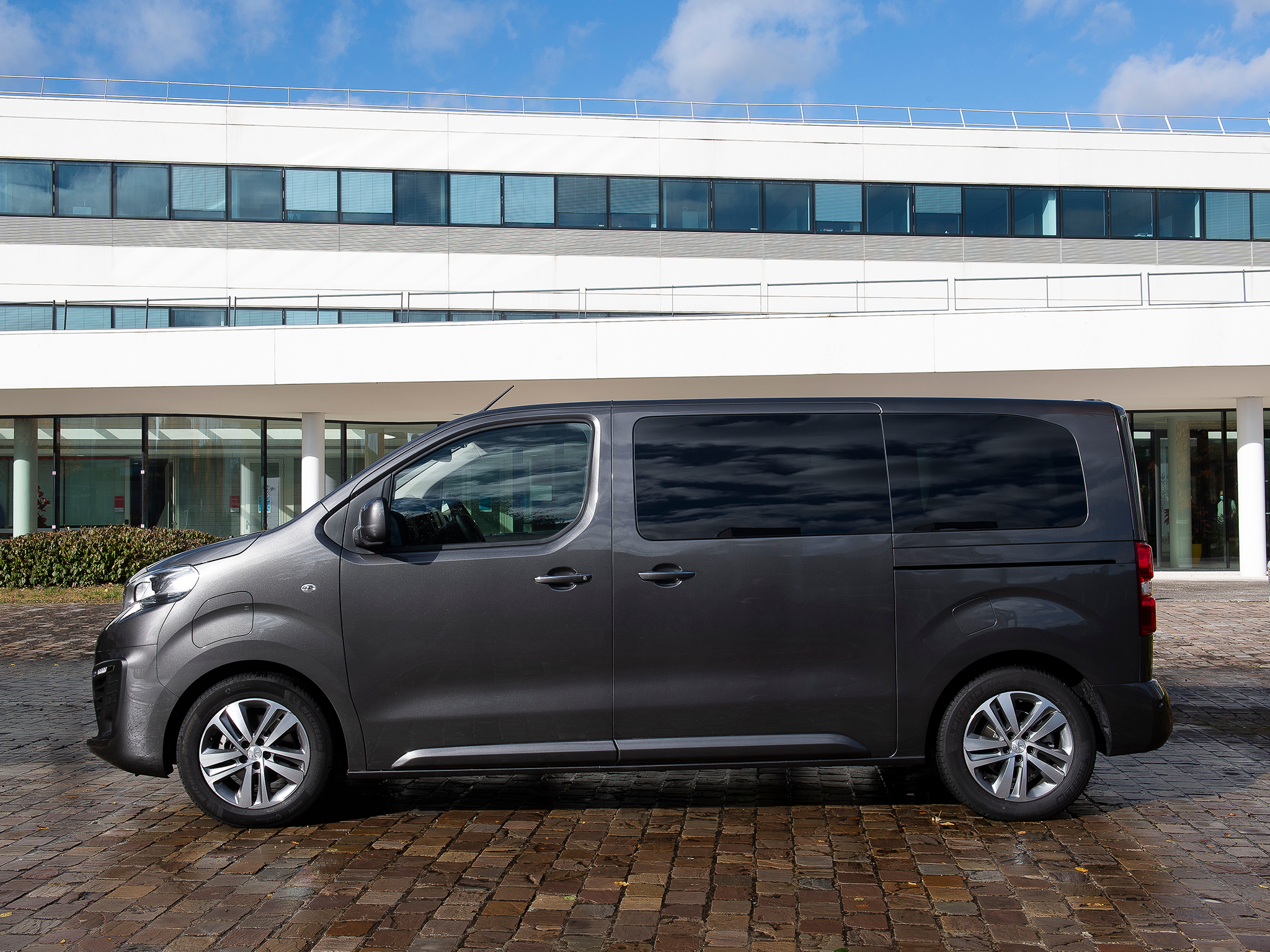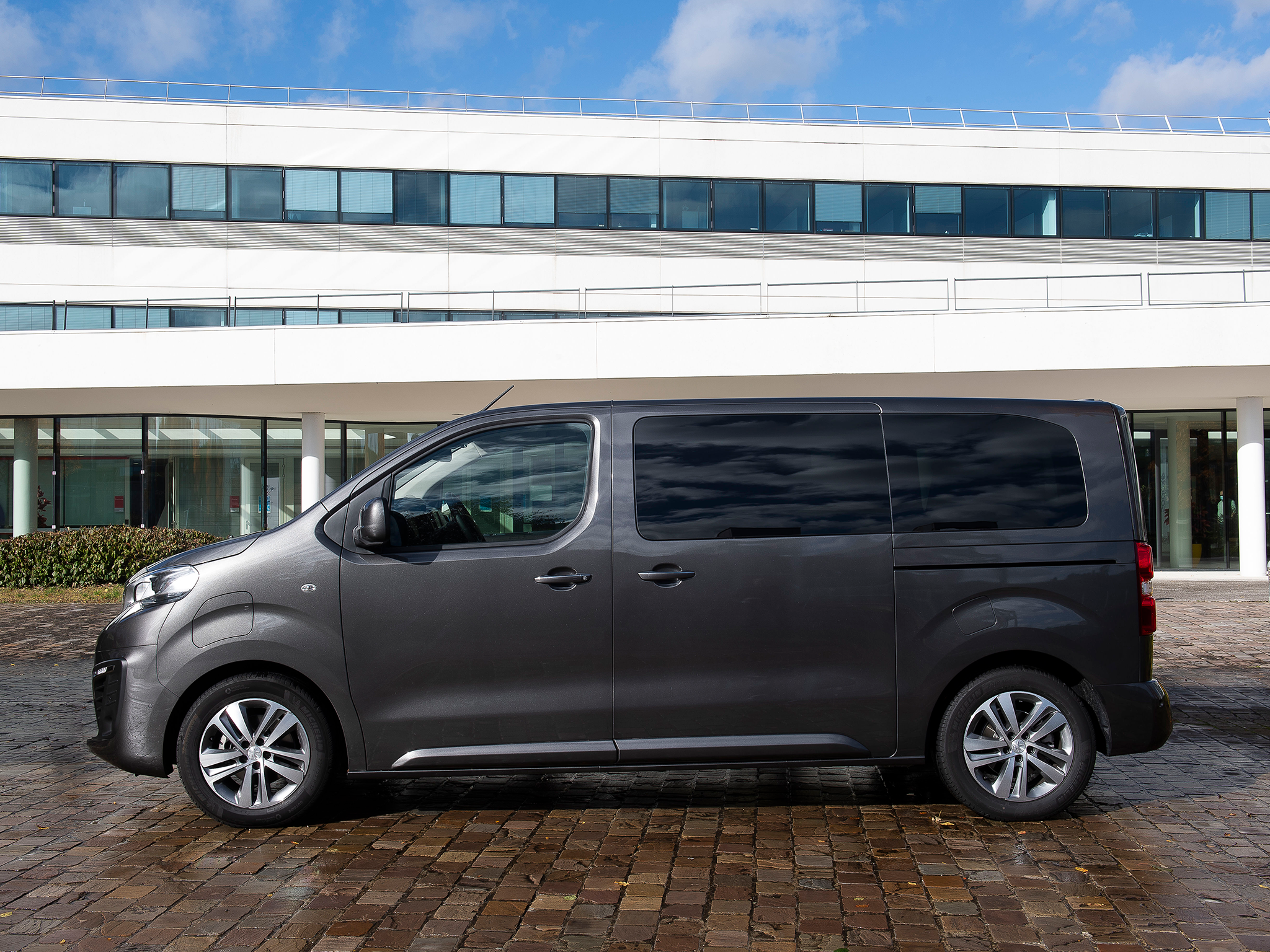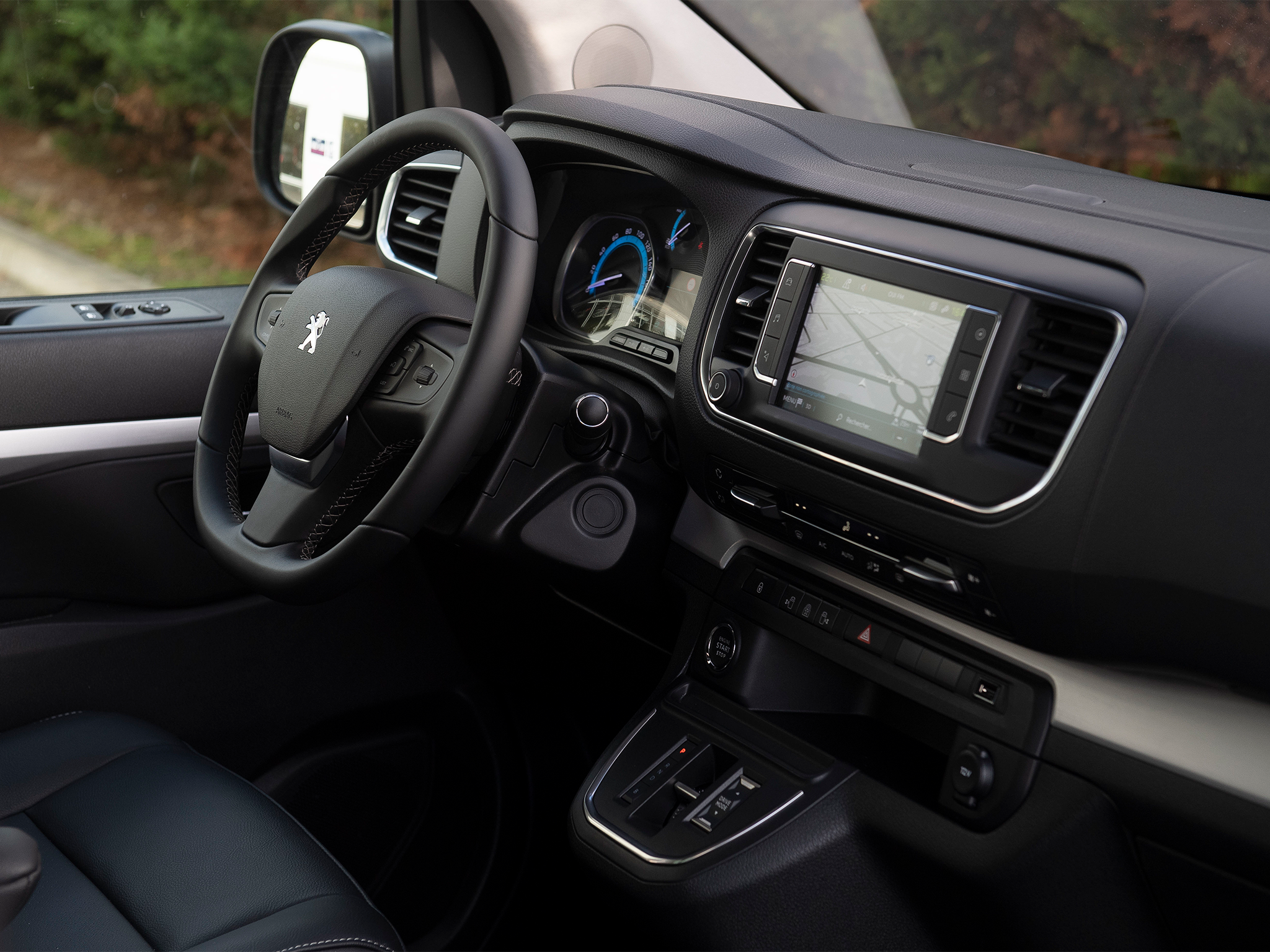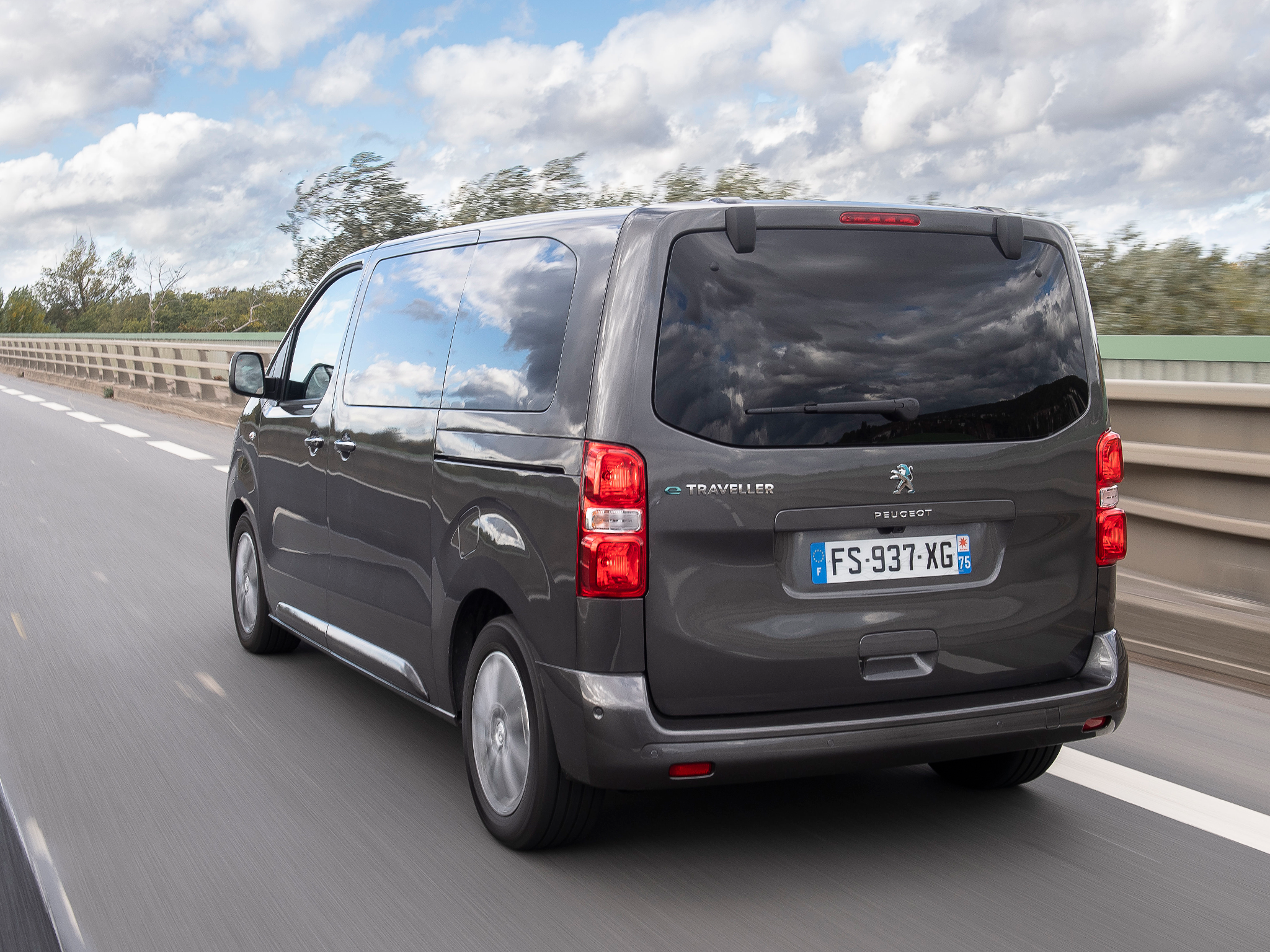Peugeot e-Traveller review: A spacious but pricey EV people carrier

The Independent's Electric Cars Channel is sponsored by E.ON Next: driving the UK's EV and renewable energy revolution
[1]The Peugeot[2] e-Traveller is a smart and sophisticated-looking van-derived people carrier, seating up to eight people. It has recently gained a new front-end design, with Peugeot's 'three claw' LED running lights, along with the firm's latest bold new Peugeot shield. We think it looks very distinctive.
It comes as standard with a 75kWh battery, which gives an on-paper range of 217 miles. The boxy shape does mean you probably won't get near to this in everyday driving, though. It's particularly impacted by driving at higher speeds on the motorway.
Even so, you still have the convenience of charging at home, which you don't get with a diesel MPV. And even by MPV standards, the Peugeot e-Traveller is extremely roomy and practical. Space inside is vast, meaning all eight passengers have leg and headroom to spare.
Swap out a few seats, and the boot is enormous too. There's no need to be sniffy about it being based on a van either, because modern vans are far less utilitarian than you'd think, particularly pure electric ones like this. Although you'd perhaps hope so, given the prices Peugeot charges.
How we tested
I spent a week testing the Peugeot e-Traveller, on all types of roads. It's a big machine, but great visibility meant it easily fitted into town-bound family life, and I also made friends with fellow vans on the motorway. The Peugeot e-Traveller has a range of up to 217 miles, impressive for a large MPV. (Peugeot)
The Peugeot e-Traveller has a range of up to 217 miles, impressive for a large MPV. (Peugeot)
Independent rating: 7/10
- Pros: Luxurious appearance, excellent space and practicality, large battery is standard
- Cons: Expensive, higher speeds hurt range
- Price range: GBP48,995 to GBP55,075
- Battery size: 75kWh
- Maximum claimed range: 217 miles
- Miles per kWh: 2.4
- Maximum charging rate: 100kW
- Charging cost per 100 miles on E.ON Drive Next: GBP2.85
Battery, range, charging, performance and drive
The Peugeot e-Traveller comes with a single 75kWh battery option. One alternative, the Vauxhall Vivaro Life Electric, also offers a 50kWh choice, but this is too small for such a large vehicle as this, meaning the real-world range really suffers. According to official figures, the Peugeot offers up to 217 miles between charges, although the bluff shape means this will drop notably at speed on the motorway.
The Peugeot e-Traveller is able to use 100kW DC rapid chargers. By modern standards, this isn't overly rapid, with a charge from 5 to 80 per cent taking around 45 minutes. The charge point is located up front, on the passenger side, so it will be easy to drive into public chargers.
This is a large people carrier that measures nearly five metres long in Standard guise, or over 5.3 metres in Long guise. It's therefore heavy, particularly with eight people on board.
0-62mph in 14.3 seconds isn't thrilling, but the electric motor means it still has reasonable pulling power. Driving it is also made easier by an electric parking brake and clever 'hill hold' function that stops you rolling back when pulling away uphill.
If you're used to car-like dynamics, the Peugeot's bobbly suspension and slow steering might be a bit of a surprise. It's still pretty good overall though, and certainly more refined than any diesel alternative would be.
Interior, practicality and boot space
The Peugeot e-Traveller has a solid, rugged interior, with a few sparkling touches to reflect its passenger car status. The tactility is a bit spec-dependent, with base Active having a plastic steering wheel, while Allure has a leather rim, that's also heated. Active also has plastic flooring, while Allure has posh carpets.
Literally, you pays your money. It is cavernous inside. It's more minibus than regular people carrier, with the light and airy feel underlined by the big windows all round.
These are partially tinted on Active, and fully tinted on Allure, for the full VIP effect. To further underline this, Allure also has power rear doors. The eight seats are spread across three rows, with two in the front, and then a duo of three seats.
Because of all the space on offer, the seats can be large and supportive, for more sophisticated travel than in a comparatively squashed car-based people carrier. The boot is naturally enormous too, offering up to 3,100 litres, with the added practicality of a separately-opening tailgate window. You'll welcome this, as the boot lid itself is enormous.
 Inside, the Peugeot e-Traveller is spacious and practical, with plenty of room for passengers and luggage. (Peugeot)
Inside, the Peugeot e-Traveller is spacious and practical, with plenty of room for passengers and luggage. (Peugeot)
Technology, stereo and infotainment
The Peugeot e-Traveller comes as standard with a 10.0-inch infotainment screen, and an additional 10.0-inch digital driver display. Standard Active has smartphone mirroring - both Android Auto and Apple CarPlay - with Allure adding connected navigation. Tech features are a bit limited on Active, restricted to things such as electric windows and air con.
Allure is better, with features such as climate control in the front that extends to air con in the rear - it's controlled through a panel mounted in the roof. Saying that, all models have a voice assistant, allowing drivers to control certain functions by speaking the 'OK Peugeot' command. The standard stereo is rather weedy, with just four speakers and four tweeters.
It's worth upgrading to the premium Tosca stereo, which has a subwoofer, a central loudspeaker in the dash, plus four speakers in both rows one and two. A standard amplifier provides the power to boost it all. It is an optional extra on Allure trim.
Prices and running costs
The Peugeot e-Traveller has prices that start from a steep-sounding GBP48,995, but this does include the 75kWh battery. That's for an Active model, with the preferable Allure version starting from GBP54,175.The 'Long' version is just GBP845 extra, which seems more than reasonable to us. If you can top up the battery using cheap electricity from a home charger, the Peugeot e-Traveller should be cheap to run. Service intervals are a lengthy 25,000 miles or two years as well, while even the tyres shouldn't be too pricey to replace - operators of the related van version certainly don't like to spend any more than they need to here.
 The Peugeot e-Traveller comes with a 75kWh battery as standard and can be charged at up to 100kW. (Peugeot)
The Peugeot e-Traveller comes with a 75kWh battery as standard and can be charged at up to 100kW. (Peugeot)
Peugeot e-Traveller rivals
- Vauxhall Vivaro Life Electric
- Ford E-Tourneo Custom
- Citroen e-Spacetourer
FAQs
How long does it take to charge?
The Peugeot e-Traveller will charge from 5 to 80 per cent in 45 minutes, using a DC rapid charger.How much does it cost - is it worth it?
The Peugeot e-Traveller has a steep starting price tag of almost GBP49,000, but in terms of price per seat, it's still something of a bargain EV.
Does Peugeot replace batteries for free?
Peugeot includes an eight-year, 100,000-mile battery warranty, on top of the regular three-year warranty for the e-Traveller itself.
The verdict: Peugeot e-Traveller
The Peugeot e-Traveller looks surprisingly distinctive following its facelift, and it is sensibly only offered with the larger of two battery options.
While this does improve the range, motorway driving in a fully-laden model may still involve quite a few stops to recharge.
References
- ^ SPONSORED BY E.ON NEXT (www.independent.co.uk)
- ^ Peugeot (www.independent.co.uk)